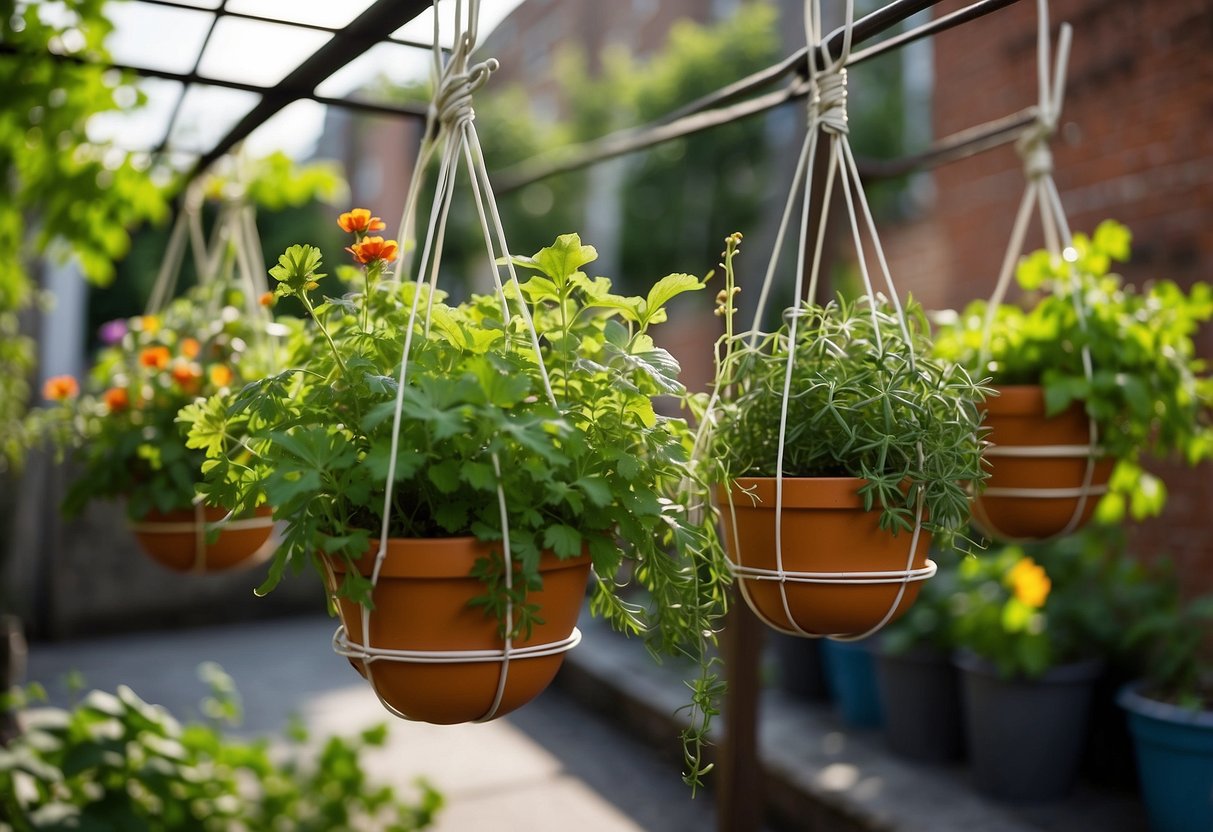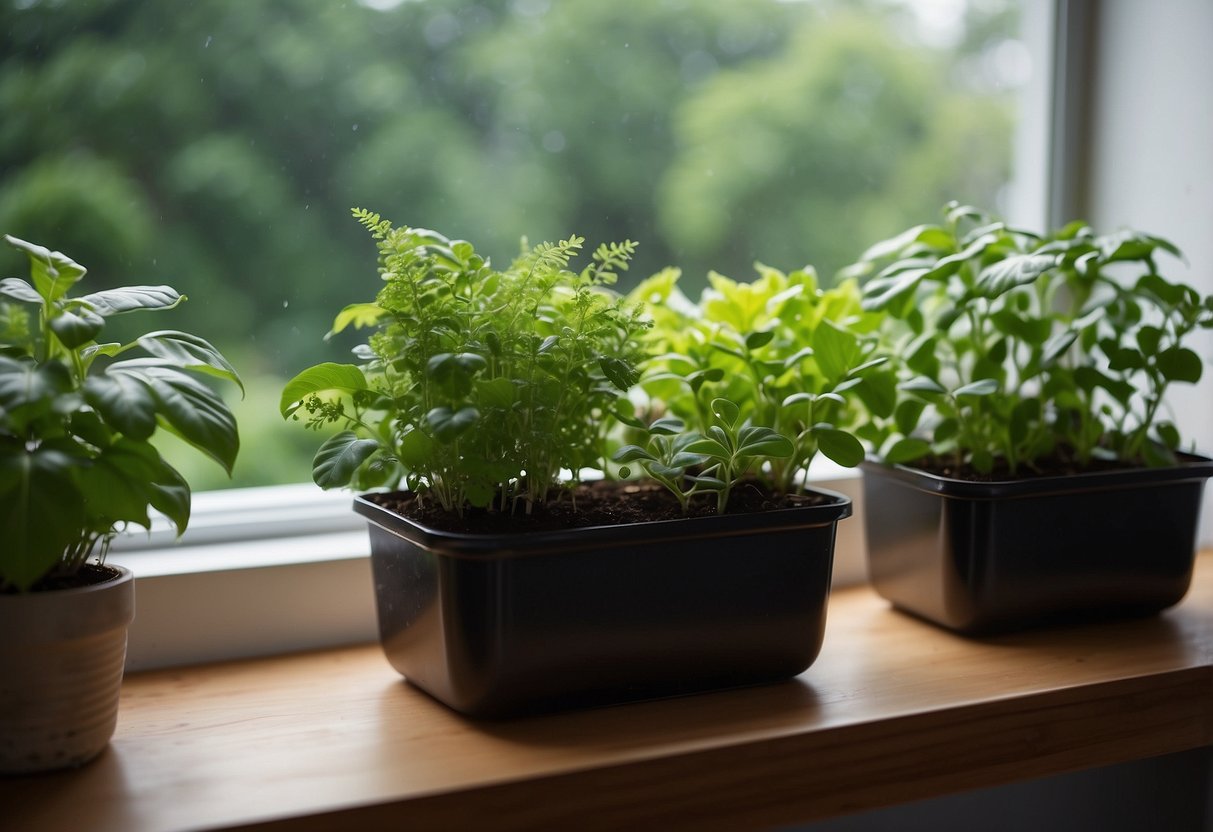Urban Vegetable Garden Ideas: Creative Tips for Small Spaces
Growing your own vegetables in an urban environment is not only possible but can also be incredibly rewarding. Urban vegetable gardens allow you to make the most of small spaces, such as balconies, rooftops, or even windowsills. Whether you have a tiny apartment or a small backyard, you can successfully grow fresh produce right at home.

Why start an urban vegetable garden? It’s a great way to ensure you have access to fresh, healthy food while also enjoying the benefits of gardening. Becoming self-sufficient and reducing your carbon footprint are just a couple of the many reasons urban vegetable gardening is worth exploring.
1) Raised Bed Planters

Raised bed planters are a great choice for urban vegetable gardens. They don’t take up much space and can be placed anywhere with good sunlight. You can use materials like wood, concrete blocks, or even old crates to build them.
These planters allow you to control the soil quality and moisture levels better. They’re also easier to maintain and keep weed-free. Adding a trellis to your raised bed can help support taller plants like tomatoes or beans. This way, you can maximize your growing space and variety of vegetables.
2) Vertical Garden Trellis

Creating a vertical garden trellis is a fantastic way to grow vegetables in small urban spaces. You can set up a trellis panel against a wall or fence to support the plants.
Choose a sturdy material like wood or metal. Paint or stain the wood to protect it from the elements and make it stand out.
Climbing vegetables such as peas, beans, and tomatoes thrive on a trellis. Not only does this method save space, but it also makes harvesting easier. For more ideas, visit Vertical Gardening Ideas.
3) Hanging Herb Baskets

Hanging herb baskets are a great way to grow fresh herbs in small spaces. You can hang them on your balcony, porch, or even indoors near a sunny window.
Herbs like parsley, chives, and winter savory thrive in hanging baskets. They add greenery and fresh flavors to your cooking.
DIY projects make it easy to create your own hanging herb baskets. For inspiration, check out these DIY Hanging Baskets for Herbs.
Using hanging baskets saves space and keeps your herbs within easy reach.
4) Self-Watering Containers

Self-watering containers are great because they keep your plants hydrated without you needing to water them every day. These containers have a built-in reservoir at the bottom that supplies water to the soil as needed.
You can easily make your own self-watering container using items like a regular planter and a water bottle or a styrofoam cup. Just ensure the soil remains moist but not too wet. For more ideas, check out these DIY self-watering container tips. These systems help your plants grow strong, even if you forget to water them occasionally.
5) Pallet Vegetable Garden

A pallet vegetable garden is perfect for small spaces.
Stack pallets and fill them with soil to create multiple planting levels.
You can use this method to grow a variety of vegetables, making the most of your vertical space.
For urban dwellers, it’s an efficient way to garden without needing a large area.
To get started, secure pallets together and fill them with soil. Then, plant your veggies, and water regularly.
6) Window Box Planters

Window box planters are perfect for growing veggies in small urban spaces. They fit on windowsills and balconies, making the most of limited space.
You can grow herbs like parsley and basil, or veggies like spinach and bush beans. These plants thrive in window boxes and add fresh flavors to your meals.
Choose window boxes at least 10 inches wide and 12 inches deep for most vegetables. This ensures your plants have enough room to grow.
7) Recycled Tire Planters

Recycled tire planters are a great way to upcycle old tires into something useful and creative for your urban vegetable garden.
To start, choose a tire that fits your space. Tractor tires work well for larger areas, while smaller car tires can be stacked or lined up along fences.
Next, prepare your tire planter by filling the bottom with pebbles or gravel for drainage. Add soil and the vegetable plants of your choice.
You can also paint and decorate the tires to match your garden theme, making them both functional and attractive in your space.
8) Hydroponic Window Gardens

Hydroponic window gardens are great for urban spaces. They use water to grow plants instead of soil.
You can grow herbs like basil, mint, and cilantro. These gardens often need a simple system of pumps and tubes to keep the water moving.
Using grow lights is helpful for plants to get enough light, especially when natural light is low. A simple setup can make a big difference in your indoor garden. For more details, check out this guide on urban window garden hydroponics.
9) DIY Greenhouse Kits

You can easily start your urban garden with DIY greenhouse kits. These kits come with all the pieces you need to assemble your greenhouse.
For small spaces, consider the Gardman Mini Greenhouse. It fits nicely on decks or patios and offers four tiers for your plants.
Another option is using downloadable blueprints to build your own greenhouse based on tried-and-true designs. This way, you won’t waste money on unnecessary materials.
10) Companion Planting

Companion planting is a smart way to improve your urban vegetable garden.
By planting certain vegetables together, you can boost their growth and reduce pests.
For example, you can plant corn and beans together. Corn supports the beans, and beans add nitrogen to the soil.
Another great pair is tomatoes and basil. Basil can help repel insects that bother tomatoes.
Try planting lettuce with taller plants like corn to give shade and keep them cool in the summer.
Companion planting can help your garden thrive naturally. Check out more details on the Companion Planting Chart from The Spruce.
Planning Your Urban Vegetable Garden

Careful planning is essential for a successful urban vegetable garden. Focus on choosing the right location and understanding how light and shade affect your plants.
Choosing the Right Location
Start by finding a spot with good sunlight. Vegetables need about six hours of direct sunlight every day. Tomatoes, peppers, and beans thrive with lots of sun. Herbs and lettuce, on the other hand, can manage with a bit less.
Look for areas near your windows, balconies, or rooftops. These spots often get plenty of light. Ensure the area is accessible so you can water and care for your plants easily.
Think about the size of your space, too. You might use raised beds, containers, or even a vertical garden to maximize your growing area. Be sure there’s good drainage wherever you plant.
Understanding Light and Shade
Light plays a crucial role in your garden’s success. Watch how the sun moves across your space during the day. Take notes on which areas get the most light and when.
If you find some spots are shady, don’t worry. Root vegetables like carrots and leafy greens can grow well in partial shade. You might plant taller vegetables where they catch the most light and shorter ones in shadier spots.
Shade cloths or reflective materials can also help manage light levels. Adjusting these can protect plants from too much sun in peak summer.
By understanding light and shade in your garden, you can better plan where to place each type of plant for optimal growth.
Soil Preparation and Maintenance

Proper soil care is the key to a healthy urban vegetable garden. To help your plants thrive, focus on testing and improving your soil quality and using organic matter and fertilizers effectively.
Testing and Amending Soil
You need to test your soil to understand its composition. This step helps you know the pH level and nutrients available. You can use a store-bought soil test kit or send samples to a local extension service.
Ideal pH levels for most vegetables range from 6.0 to 7.0. If your soil is too acidic, you can add lime. If it’s too alkaline, sulfur can help lower the pH. Regular testing helps you keep track of changes and adjust as needed.
Nutrient levels are essential. If tests show low levels of nitrogen, phosphorus, or potassium, add amendments like compost, bone meal, or fish emulsion. Always follow the recommendations from your test results to avoid over-fertilizing, which can harm plants.
Organic Matter and Fertilizers
Incorporating organic matter improves soil structure and fertility. Materials like compost, aged manure, and leaf mold add nutrients and help soil retain moisture.
Compost is incredibly useful. You can make it yourself from kitchen scraps and yard waste. It enriches the soil and encourages beneficial microorganisms. Mix it into your soil before planting.
Fertilizers are also vital. Use organic options like fish emulsion, bone meal, or seaweed extract. These provide essential nutrients without harmful chemicals. Follow application instructions carefully to avoid over-fertilizing, which can burn plant roots.
Regularly adding organic matter and balanced fertilizers ensures your plants receive the nutrition they need to grow strong and healthy.
Watering Techniques for Urban Gardens

Effective watering is crucial for urban gardens to thrive. Ensuring your plants get the right amount of water can be achieved through smart watering methods and utilizing rainwater.
Efficient Watering Methods
Using efficient watering techniques helps prevent water waste and ensures your plants remain healthy. One common method is using a watering can or hose for targeted hydration. This lets you control the amount of water each plant receives, avoiding overwatering.
Drip irrigation systems are another great option. They slowly release water directly to the plant roots, reducing evaporation and water runoff. These systems can be easily installed in raised beds or container gardens, providing consistent moisture.
Mulching is also beneficial. Applying a layer of mulch around your plants conserves soil moisture and reduces the frequency of watering. It also helps keep the soil temperature stable and prevents weeds.
Rainwater Harvesting
Rainwater harvesting is an eco-friendly way to water your urban garden. It involves collecting and storing rainwater for future use. Setting up a simple rain barrel system beneath your gutter downspouts can capture significant amounts of water during rainy periods.
Using rainwater can save money on your water bill and reduce your reliance on treated tap water. Plus, rainwater is often better for your plants since it doesn’t contain chlorine or other chemicals found in tap water.
Ensure your rain barrels are covered to prevent mosquito breeding, and consider installing a fine mesh screen to keep debris out. A soaker hose connected to your rain barrel can distribute the collected rainwater slowly and evenly, making sure your plants get the hydration they need.







